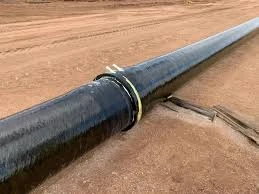
-
 Afrikaans
Afrikaans -
 Albanian
Albanian -
 Amharic
Amharic -
 Arabic
Arabic -
 Armenian
Armenian -
 Azerbaijani
Azerbaijani -
 Basque
Basque -
 Belarusian
Belarusian -
 Bengali
Bengali -
 Bosnian
Bosnian -
 Bulgarian
Bulgarian -
 Catalan
Catalan -
 Cebuano
Cebuano -
 China
China -
 China (Taiwan)
China (Taiwan) -
 Corsican
Corsican -
 Croatian
Croatian -
 Czech
Czech -
 Danish
Danish -
 Dutch
Dutch -
 English
English -
 Esperanto
Esperanto -
 Estonian
Estonian -
 Finnish
Finnish -
 French
French -
 Frisian
Frisian -
 Galician
Galician -
 Georgian
Georgian -
 German
German -
 Greek
Greek -
 Gujarati
Gujarati -
 Haitian Creole
Haitian Creole -
 hausa
hausa -
 hawaiian
hawaiian -
 Hebrew
Hebrew -
 Hindi
Hindi -
 Miao
Miao -
 Hungarian
Hungarian -
 Icelandic
Icelandic -
 igbo
igbo -
 Indonesian
Indonesian -
 irish
irish -
 Italian
Italian -
 Japanese
Japanese -
 Javanese
Javanese -
 Kannada
Kannada -
 kazakh
kazakh -
 Khmer
Khmer -
 Rwandese
Rwandese -
 Korean
Korean -
 Kurdish
Kurdish -
 Kyrgyz
Kyrgyz -
 Lao
Lao -
 Latin
Latin -
 Latvian
Latvian -
 Lithuanian
Lithuanian -
 Luxembourgish
Luxembourgish -
 Macedonian
Macedonian -
 Malgashi
Malgashi -
 Malay
Malay -
 Malayalam
Malayalam -
 Maltese
Maltese -
 Maori
Maori -
 Marathi
Marathi -
 Mongolian
Mongolian -
 Myanmar
Myanmar -
 Nepali
Nepali -
 Norwegian
Norwegian -
 Norwegian
Norwegian -
 Occitan
Occitan -
 Pashto
Pashto -
 Persian
Persian -
 Polish
Polish -
 Portuguese
Portuguese -
 Punjabi
Punjabi -
 Romanian
Romanian -
 Russian
Russian -
 Samoan
Samoan -
 Scottish Gaelic
Scottish Gaelic -
 Serbian
Serbian -
 Sesotho
Sesotho -
 Shona
Shona -
 Sindhi
Sindhi -
 Sinhala
Sinhala -
 Slovak
Slovak -
 Slovenian
Slovenian -
 Somali
Somali -
 Spanish
Spanish -
 Sundanese
Sundanese -
 Swahili
Swahili -
 Swedish
Swedish -
 Tagalog
Tagalog -
 Tajik
Tajik -
 Tamil
Tamil -
 Tatar
Tatar -
 Telugu
Telugu -
 Thai
Thai -
 Turkish
Turkish -
 Turkmen
Turkmen -
 Ukrainian
Ukrainian -
 Urdu
Urdu -
 Uighur
Uighur -
 Uzbek
Uzbek -
 Vietnamese
Vietnamese -
 Welsh
Welsh -
 Bantu
Bantu -
 Yiddish
Yiddish -
 Yoruba
Yoruba -
 Zulu
Zulu
Exploring the Features and Benefits of GRP Shell Technology in Modern Applications
Exploring GRP Shell Enhancing Safety and Efficiency in Industrial Applications
In industrial settings, the demand for materials that combine strength, durability, and resistance to harsh environments is paramount. One material that has emerged as a frontrunner in meeting these demands is the Glass Reinforced Plastic (GRP), also known as fiberglass. Among the various applications of GRP, the GRP shell has gained significant traction owing to its exceptional properties and versatility.
What is a GRP Shell?
A GRP shell is essentially a structure made from glass reinforced plastic, where glass fibers are embedded in a plastic matrix. This composite material is known for its high strength-to-weight ratio, making it an ideal choice for applications where both durability and weight reduction are critical. GRP shells can be molded into various shapes, providing flexibility in design for a multitude of uses.
Advantages of GRP Shells
1. Corrosion Resistance One of the key benefits of GRP shells is their resistance to corrosion. Unlike traditional materials such as steel, which can rust and degrade over time, GRP does not corrode when exposed to water, chemicals, or environmental elements. This makes GRP shells particularly valuable in industries such as marine, chemical processing, and wastewater management.
2. Lightweight The low density of GRP allows for the production of structures that are significantly lighter than their metal counterparts. This characteristic not only facilitates easier transportation and installation but also reduces the load on supporting structures, paving the way for more innovative designs.
3. Insulation Properties GRP shells inherently possess excellent thermal and electrical insulation properties. This attribute is crucial in applications where temperature regulation or electrical safety is important, such as in electrical enclosures and thermal tanks.
4. Durability The integration of glass fibers provides GRP shells with heightened durability. They can withstand impact and stresses that would typically compromise other materials. This characteristic ensures long product life with minimal maintenance requirements.
grp shell

5. Versatile Applications GRP shells can be utilized in a wide array of applications, including storage tanks, pipelines, ventilation ducts, and even automotive components. Their versatility means they can be tailor-made to meet specific industry needs.
Applications in Various Industries
1. Marine Industry GRP shells are widely used in boat construction and other marine applications due to their excellent resistance to water and salty environments. They help in creating lightweight hulls that improve speed and fuel efficiency.
2. Oil & Gas In the oil and gas sector, GRP shells are employed for pipe systems and storage solutions that must withstand corrosive environments while ensuring safety and reliability.
3. Construction The construction industry leverages GRP shells for roofing systems, cladding, and structural components. Their lightweight nature enhances the efficiency of building processes without sacrificing strength.
4. Electrical and Electronics GRP shells are commonly used in the production of insulators and protective casings for electrical equipment, helping to prevent short circuits and ensure safety.
Conclusion
The GRP shell is a remarkable innovation in materials science, offering a combination of strength, lightness, and resistance to environmental challenges. As industries continue to seek materials that enhance safety while promoting efficiency, the importance of GRP shells will only grow. Through ongoing research and development, we can expect even more advanced applications and improvements in GRP technology, solidifying its place as a vital component in modern engineering and industrial design. Whether in marine applications or construction, GRP shells represent a leap forward in materials that cater to the evolving needs of today's industries.









